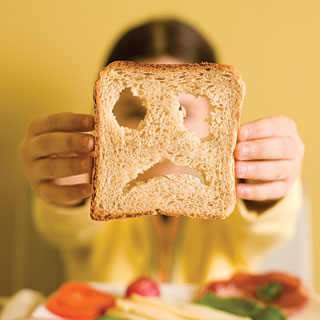Celiac disease is a digestive and autoimmune disorder with more than 300 possible symptoms. Different people experience this disease differently mainly because the symptoms vary from person to person. Celiac disease in children is a definite cause of concern, but it often goes undiagnosed mainly because its symptoms are confused with many other disorders, such as lactose intolerance and irritable bowel syndrome. You need to gather more information about celiac disease to understand how to make things more manageable for your child.
Celiac Disease in Children and Its Causes
 Also known as gluten-sensitive enteropathy, it is an autoimmune disorder that causes damage to the lining of your small intestine when you eat food with gluten. Some grains contain gluten and some don't, but most have it in the form of protein. Once the disease have damaged the intestine, it becomes difficult for your child's body to absorb nutrients, especially calcium, fat, folate, and iron.
Also known as gluten-sensitive enteropathy, it is an autoimmune disorder that causes damage to the lining of your small intestine when you eat food with gluten. Some grains contain gluten and some don't, but most have it in the form of protein. Once the disease have damaged the intestine, it becomes difficult for your child's body to absorb nutrients, especially calcium, fat, folate, and iron.
What Causes It?
The immune system of children with celiac disease reacts when they eat foods containing gluten. The immune response produces antibodies that attack the intestinal lining and cause inflammation. These antibodies also damage the villi, the hair-like structures in the small intestines that absorb nutrients from food. Any damage to the villi will make it impossible for the body to absorb nutrients. If you wonder why your child looks malnourished even though he/she eats enough, that could be due to damaged villi.
The real cause of celiac disease is still not clear, but many experts believe it runs in families. It means that if your child has celiac disease, the chances are someone else in your family has it as well. It's usually true in 10% of cases. It is a common disorder in the United States with every 1 in every 133 people suffering from it.
Symptoms of Celiac Disease in Children
When your child is suffering from celiac disease, you're more likely to see some of the following symptoms.
- Decreased appetite
- Growth problems with failure to gain weight
- Chronic constipation
- Chronic diarrhea
- Fatigue
- Abdominal pain and bloating
- Irritability
In addition, your child may also show signs of malnourishment. Celiac disease in children can cause thighs to become thin and stomach to expand. These symptoms in children show whenever they eat food with gluten, but for teens, these symptoms show up when a person goes through something stressful like leaving home for college. This may lead to other symptoms such as growth problems, delayed puberty, depression, mouth sores, and dermatitis.
Treatments for Celiac Disease in Children
If your child has celiac disease, it's best to take measures as early as possible to avoid potential risks and complication. Left untreated, your child's daily life and development could be severely influenced.
Gluten-Free Diet

The first, and probably the only, thing you need to do is to put your child on a gluten-free diet. You have to learn about the foods that contain gluten.
- Avoid barley, wheat, and rye. Instead, go for quinoa, gluten-free oats, rice, millet, corn, buckwheat and breads made with potatoes or corns.
- Fruits and vegetables are great choices. Vegetables such as zucchini, peas, green beans, lettuce, eggplant, onions, cauliflower, carrots, and peppers are rich in minerals and healthy for your kid. As for fruits, pay attention to variety for the balance of nutrition. Kiwi, watermelon, star fruit, papaya, mango, clementines, and pomergranate are some of the examples.
- Most meats such as beef, pork, and chicken are gluten-free. But be careful with processing meat and read labels first.
- Plain milk, yogurt, sour cream, cheese and cottage cheese are free to go. But do read labels when buying yogurts as some additives may contain gluten.
You may even have to consult with a dietitian to plan a better gluten-free diet for your child. Once you take gluten out of your child's diet, the intestinal inflammation will begin to lessen in a few weeks. However, it will take months, or years in some cases, for the villi to improve. If you accidentally give your child something that contains gluten, it will result in diarrhea and severe abdominal pain. Even trace amounts of gluten are enough to trigger an immune response.
Supplementation

In case your child shows signs of malnourishment, your doctor may suggest giving them vitamin and mineral supplements. You may have to give your child supplements containing iron, folate, calcium, vitamin K, zinc, vitamin D, and Vitamin B-12.
How Can I Help My Child?
Since your child is unaware of what's happening to him/her, it is important for you to take some steps and help your child understand his/her condition better. Here's what you can do for celiac disease in children.
1. Explain It to Your Child
You should explain it to your child why he/she needs to avoid gluten. Be sure to make it clear that they only need to avoid gluten and enjoy everything else. Talk to them regularly to help them develop the habit of avoiding gluten.
2. Help Them Develop Skills
It is important to make your child a part of the process, so they could develop skills to manage their condition better. If you always dictate their diet, they may push back and resist. Ensure their involvement in food shopping, meal planning, placing restaurant orders, reading labels, and packing school lunches. Empower them to make their own food, so they know what they can or cannot eat.
3. Help Them Read Labels
It is important to develop a habit of reading labels when you have a child with celiac disease. Help your child to do the same because sometimes gluten is present in food in different forms. Avoid anything like malt syrup and brewer's yeast. Gluten may also be present in salad dressings, sauces, vegetarian meat, and deli meats. Even oats can be contaminated when they are manufactured in a facility that also process gluten.
4. Discuss Everything with Teachers and Coaches
Talk to your child's school administrators and explain everything about their condition. Also, ensure that your child's coaches and teachers know about your child's diet for sports, classroom celebrations, and after-school activities.
5. Focus on Fun, Not Food
With so much to take care of, it is common for children with celiac disease to feel left out at birthday parties and school celebrations. It is your responsibility to make it fun and help your child understand that just because they cannot eat what other children are eating doesn't mean they're different.
What does Celiac disease feel like for kids? Watch a video to see what these kids have to say about their personal experiences:
